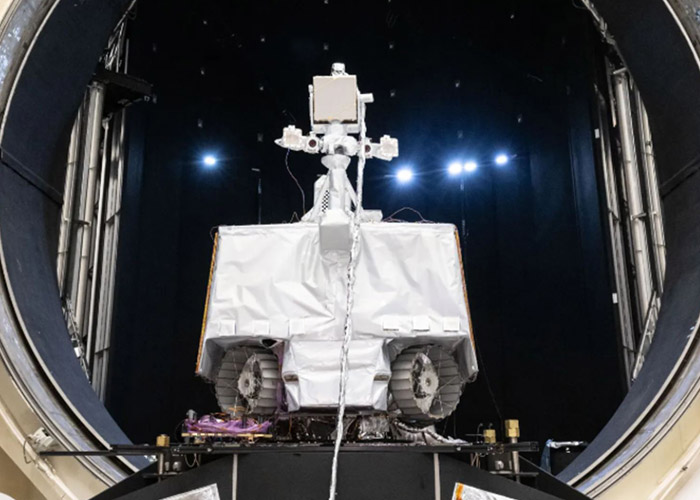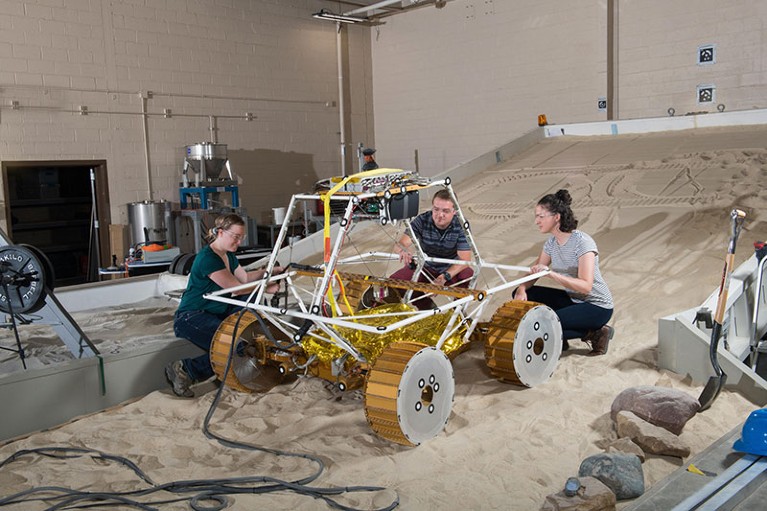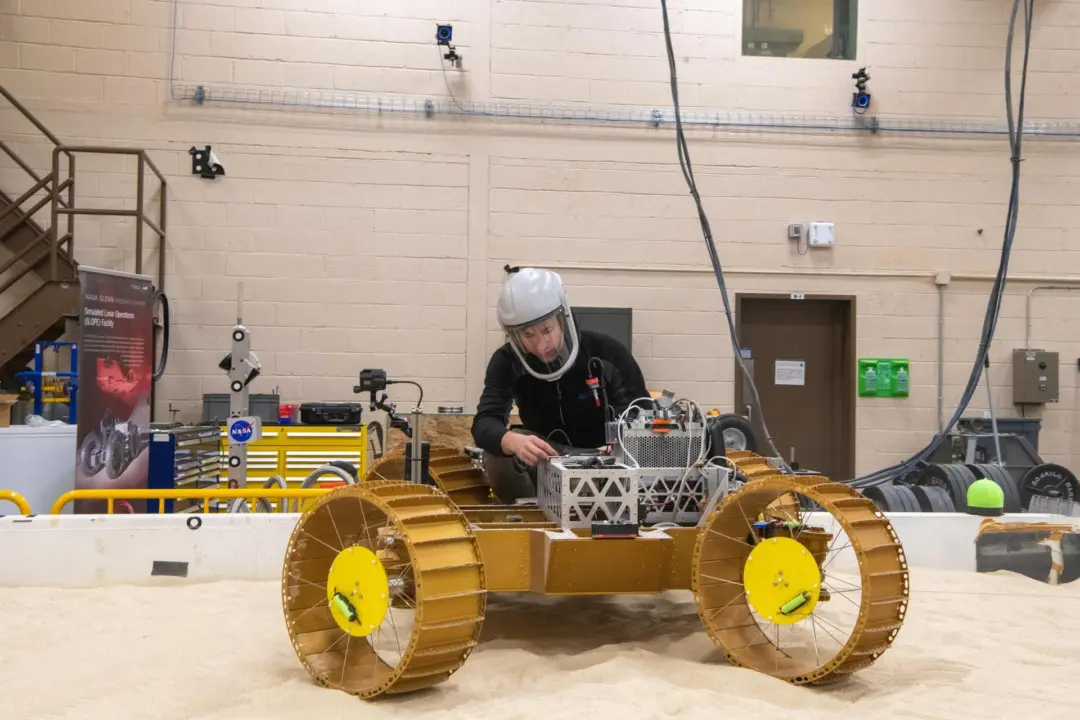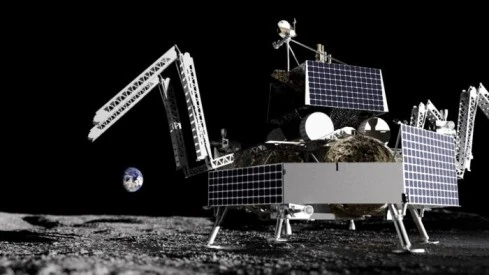To propel plans of getting a public/confidential organization and land and work NASA's Snake (Volatiles Examining Polar Investigation Wanderer) mission on the Moon in a joint effort with industry the office declared Monday it is looking for U.S. recommendations.
As a feature of the organization's Artemis crusade, instruments on Snake will exhibit U.S. industry's capacity to look for ice on the lunar surface and gather science information. The Declaration for Organization Proposition contains proposition guidelines and assessment standards for another Lunar Volatiles Science Association.
Reactions are expected Thursday, Feb. 20. Subsequent to assessing entries, any determinations by the organization will expect respondents to present a second, more point by point, proposition. NASA is supposed to go with a choice on the Snake mission this late spring.
The VIPER Mission: A Step Toward Lunar Sustainability

The VIPER spacecraft must operate in the challenging and rocky conditions existing at the Moon's southern pole to investigate water ice deposits retained in permanently sustained shadowed regions. Through its scientific instruments VIPER will investigate lunar surface materials and locate scarce resources which NASA needs to evaluate lunar resource utilization possibilities for future human exploration.
Read Also: Cheating in Space Station Games: A Growing Concern
NASA’s Call for Industry Collaboration
NASA is looking for commercial partners under its public-private partnership framework to support VIPER operations throughout the development process.
The selected partner's primary duty will include the integration work for linking VIPER to lunar landers to manage safe descent operations prior to launching Moon surface exploration tasks. NASA conducts this search within the framework of the Commercial Lunar Payload Services (CLPS) initiative to use commercial capabilities for efficient Moon delivery services.
Challenges and Opportunities
Developing a lunar rover equipment that endures harsh weather conditions while navigating rugged terrains offers a tough design problem. The industrial partner chosen by NASA must show state-of-the-art technological innovations together with advanced propulsion systems as well as precise landing capabilities to make VIPER successful.
The partnership creates extraordinary prospect for commercial stakeholders to help space exploration while gaining valuable lunar operating experience.
The Future of VIPER and Lunar Exploration
The 2024 launch schedule marks VIPER as a major advancement which leads the way to establishing long-term human settlement on the Moon. The mission findings will guide the Artemis mission development while simultaneously enabling deep-space explorations of Mars.

The selection of an appropriate industry partner by NASA will enable VIPER to generate revolutionary findings which define the path forward for future space exploration. NASA continues its mission to find the right VIPER industry partner while the global community anticipates their decision.
Read Also: Who Owns the NASA Group Investors Los Angeles?
Pushing ahead with a Snake organization offers NASA a one of a kind chance to draw in with the confidential area, said Nicky Fox, partner chairman in the Science Mission Directorate at NASA Base camp in Washington.
Such an organization gives the open door to NASA to gather Snake science that could perceive us more about water on the Moon, while propelling business lunar landing capacities and asset prospecting conceivable outcomes.
This new declaration comes after NASA gave a Solicitation for Data on Aug. 9, 2024, to look for interest from American organizations and foundations in directing a mission utilizing the office's Snake Moon wanderer after the program was dropped in July 2024.
Any organization would work under a Helpful Innovative work Arrangement. This sort of association permits both NASA and an industry accomplice to contribute administrations, innovation, and equipment to the coordinated effort.
As a feature of an understanding, NASA would contribute the current Snake wanderer with no guarantees. Potential accomplices would have to sort out for the coordination and fruitful arriving of the wanderer on the Moon, lead a science/investigation crusade, and disperse Snake produced science information.

The accomplice may not dismantle the wanderer and utilize its instruments or parts independently from the Snake mission. NASA's determination approach will lean toward proposition that empower information from the mission's science instruments to be shared transparently with anybody who wishes to utilize it.
Trending Article: Are Solar Panels Like Power Plants?
Being chosen for the Snake organization would help any organization keen on propelling their lunar landing and surface tasks abilities, said Joel Kearns, agent partner head for investigation in the Science Mission Directorate.
This sales looks for recommendations that plainly depict what is expected to effectively land and work the meanderer, and welcomes industry to propose their own integral science objectives and approaches. NASA is anticipating collaborating with U.S. industry to address the difficulties of performing volatiles science in the lunar climate.
The Moon is a foundation for planetary group science and exoplanet studies. As well as illuminating where ice exists on the Moon for possible future space explorers, understanding our closest neighbor assists us with understanding how it has advanced and what cycles molded its surface.
Frequently Asked Questions!
Has NASA sent a wanderer to the Moon?
The Lunar Wandering Vehicle (LRV) is a battery-controlled four-wheeled meanderer involved on the Moon in the last three missions of the American Apollo program (15, 16, and 17) during 1971 and 1972. It is prominently referred to the Moon buggy, a play on the term as "hill buggy".
What will occur in space investigation after Snake?
NASA answered that arrival Griffin but without Snake would "demonstrate the way that 500 kg class landers can land in the lunar polar locale, which would help all NASA space mission directorates." moreover, NASA is keen on the specialized practicality of Griffin's "beat regulated bipropellant impetus framework.
What reason did NASA drop Snake?
The Snake group confronted "seller conveyance issues and production network worries," as indicated by a report by the GAO. Key equipment expectations" were eighteen months late, and some equipment "required remediations" that ate Snake's financial plan. NASA before long deferred Snake's send off to November 2024.
What did NASA see as in 2024?
NASA and accomplices proclaimed that the Sun arrived at sun based most extreme in 2024, a time of uplifted sun powered movement when space weather conditions turns out to be more successive. The Sun powered and Heliospheric Observatory, a joint mission between ESA (European Space Organization) and NASA, found its 5,000th comet in Spring.
Where will Snake land?
The Volatiles Examining Polar Investigation Wanderer, or Snake, will arrive on the Moon's south pole in late 2024. The golf-truck estimated meanderer will investigate the south pole for no less than 100 days, wandering into freezing for all time shadowed locales regions always denied of daylight — to study and guide water ice stores.

